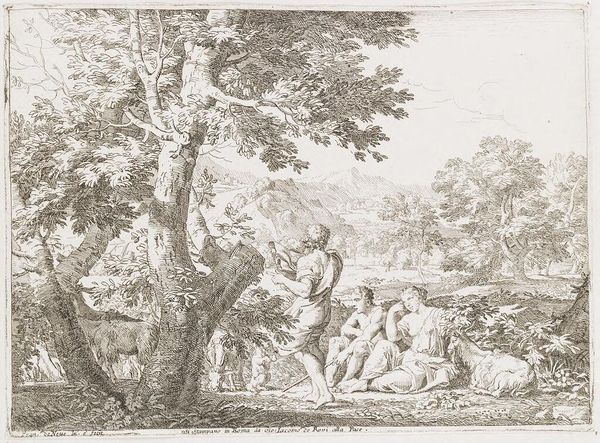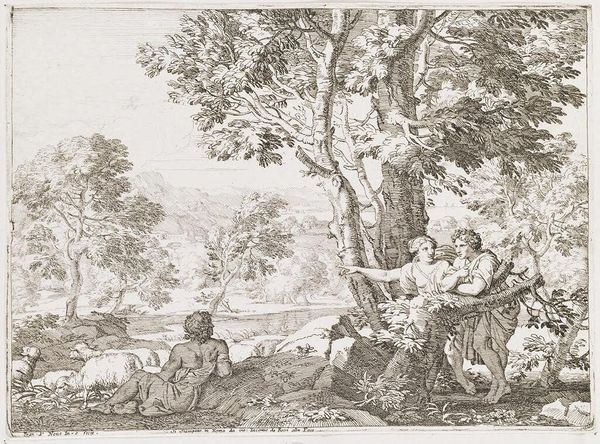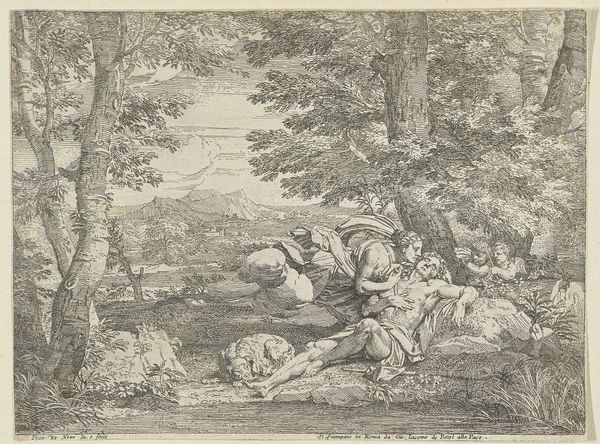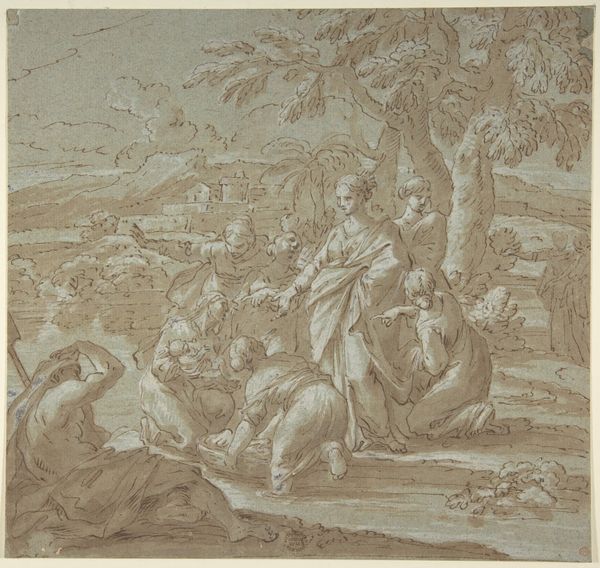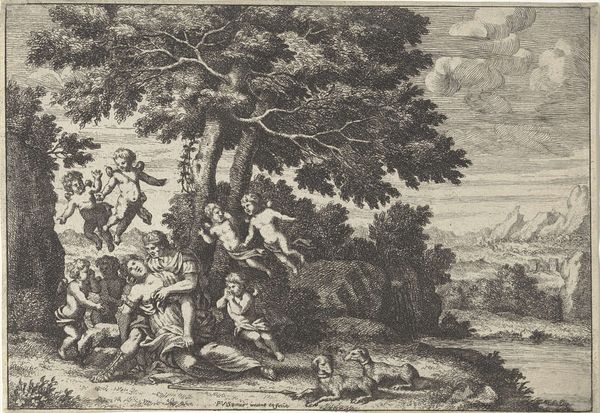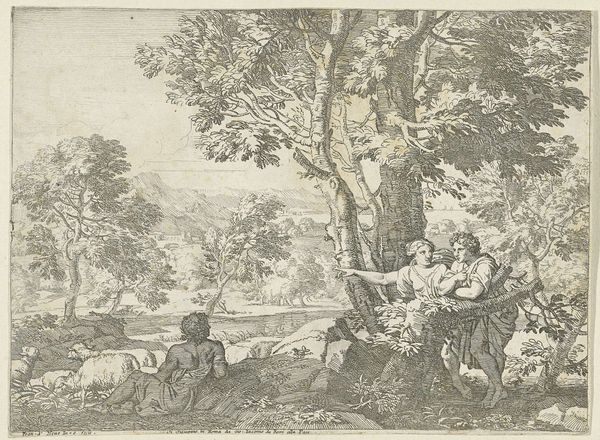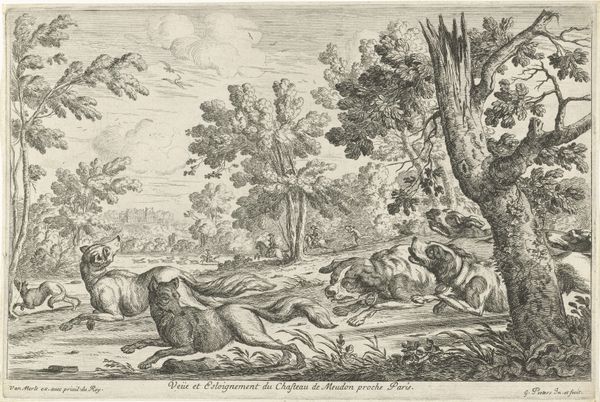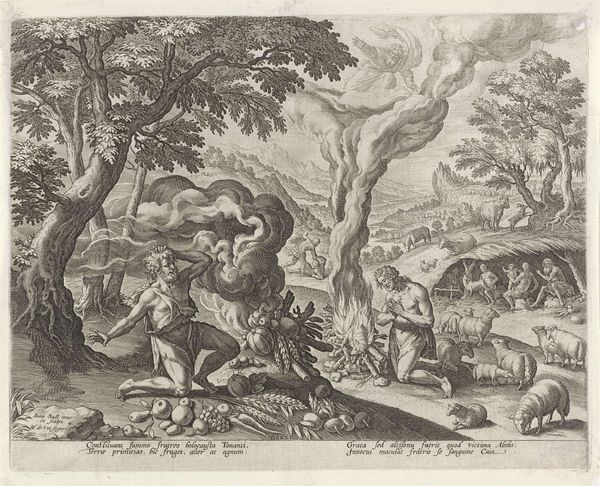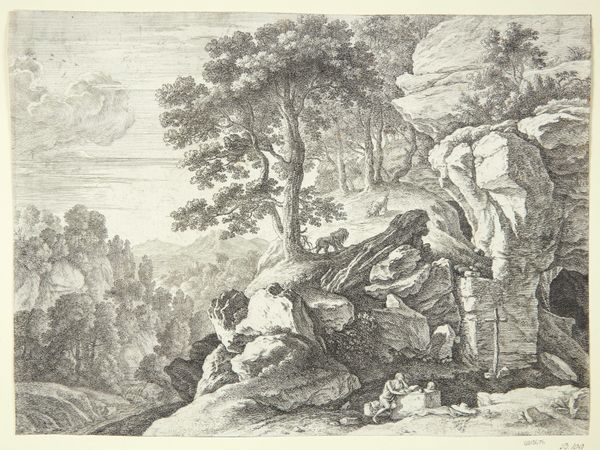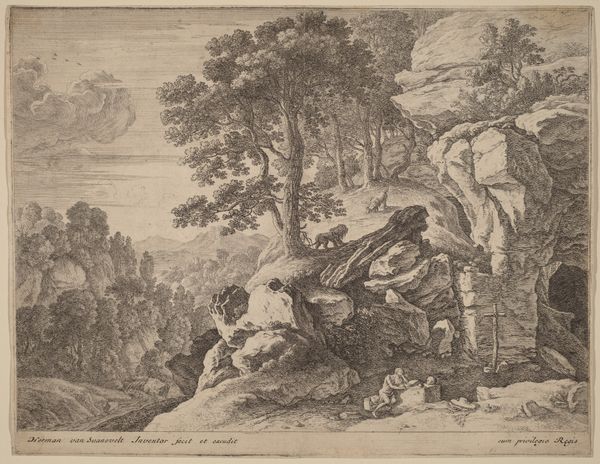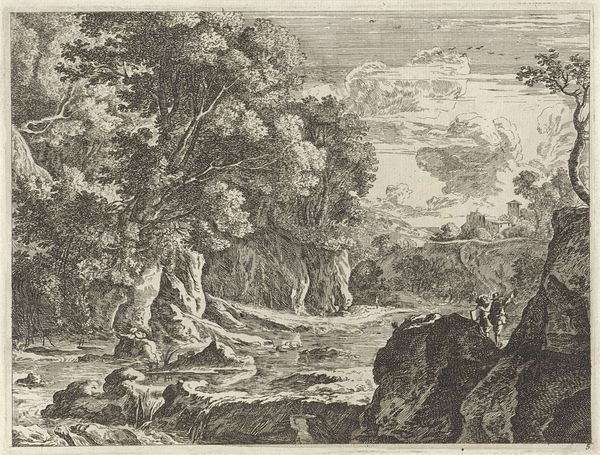
etching
#
baroque
#
etching
#
dog
#
landscape
#
etching
#
figuration
#
mountain
Dimensions: height 189 mm, width 259 mm
Copyright: Rijks Museum: Open Domain
Editor: We are looking at Franciscus de Neve’s etching, *Landscape with Shepherds and a Dog*, created between 1660 and 1666. I'm really drawn to how detailed the etching is; it feels almost photographic in its clarity, even though the scene depicts an idealized landscape. How do you interpret this work through its historical context? Curator: Well, first, the Baroque period loved drama. What's interesting here is its subtle participation. Consider where and for whom de Neve might have produced this etching. Given the figuration with classical imagery in an idealized landscape, the location where it was made, and the Baroque style, it likely served a function for a wealthy patron. It wasn't meant to be mass-produced or widely disseminated, but more than likely commissioned as a collector's item for someone within a privileged class that wanted to display the kind of "classicizing" culture that they adhered to. How does the composition itself reflect this? Editor: The way the figures are posed does resemble classical sculptures. I hadn't really thought about how the imagery would influence its meaning! Curator: Exactly! These details would signify refinement, education, and engagement with classical ideals—important markers for status and cultural capital during that era. The figures reclining so serenely is clearly meant to highlight this patron’s cultivation of aesthetic refinement. How do the dog and livestock play into this idyll? Editor: Hmm, are you suggesting the inclusion of everyday imagery romanticizes aspects of labor and property? Curator: Precisely! And think of this from a power dynamic: who is creating this scene, and for whom? And what kind of statements does the patronage of art serve? Editor: That’s fascinating. So much of the image is a signifier beyond its face value. It encourages a much deeper analysis! Curator: Right, it gives us an insight into the complex interplay between art, power, and societal values of the time. It’s less about nature, and more about the social aspirations tied to it.
Comments
No comments
Be the first to comment and join the conversation on the ultimate creative platform.
